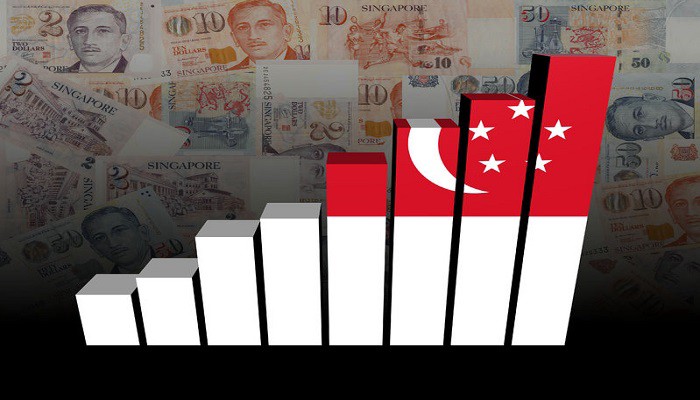Scoping Out the Straits Times Index

The Straits Times Index (STI) has been practically inseparable from the stock exchange in Singapore for as long as anyone can remember. Investors look to the STI to see how well the SGX is doing, in much the same way you would use a thermometer to check someone’s temperature. But the STI is more than just a benchmark, as it gives investors an easy way to include the country’s top stocks in their portfolio.
Use the Spiking app to follow every top stock spiking at the SGX, including those on the STI. To help make you a better-informed investor, Spiking now takes a look at how the STI began, which stocks are listed on it, and how you can invest in the Index as a whole.
The STI for Starters
Writing for The Business Times as posted by Share Investor, Cai Haoxiang traces the earliest beginnings of the Index to 1958. Singapore Press Holdings (SPH), which owns the Straits Times; what is now the Singapore Exchange, and SPH consultant, Professor Tse Yiu Kuen of the Singapore Management University put the STI together to track industrial stocks. In 1966, the STI became known as the Straits Times Industrials Index (STII).
On August 31st 1998, the STI replaced the STII because the Industrials category was removed from the stock exchange. The STI is formally reviewed, and the stocks listed on it are changed according to their performance. In 2005, for instance, the number of stocks on the Index was raised from 45 to 50.
The STI was made over in January 2008, and the SPH, SGX and the FTSE Group now run the Index. In a 2007 press release from the SPH, it was said that the new collaboration aimed to create a comprehensive suite of indices that included the STI. This was done to better reflect the performance of Singapore’s stock market, and to better meet investors’ needs.
The FTSE Group, which is owned by the London Stock Exchange, provides stock market indices, as well as the methodology that is used to calculate the STI. Today’s STI is made up of 30 stocks that belong to different sectors and have the biggest market value on the SGX.
These are the STI’s component stocks; some of which have been featured in Spiking’s weekly hot investment profiles:
1. SATS
2. CapitaLand Mall Trust
3. Singapore Airlines
4. SIA Engineering Company
5. Ascendas Real Estate Investment Trust
6. Singapore Telecommunications
7. Singapore Exchange
8. Singapore Press Holdings
9. Sembcorp Industries
10. Thai Beverage
11. Jardine Cycle & Carriage
12. Hongkong Land Holdings
13. Oversea-Chinese Banking Corporation
14. Wilmar International
15. DBS Group Holdings.
16. Singapore Technologies Engineering
17. CapitaLand Commercial Trust
18. Hutchison Port Holdings Trust
19. StarHub
20. United Overseas Bank
21. Keppel Corporation
22. Golden Agri-Resources
23. ComfortDelGro
24. City Developments
25. CapitaLand
26. Global Logistic Properties
27. Yangzijiang Shipbuilding (Holdings)
28. UOL Group
29. Sembcorp Marine
30. Genting Singapore
Use the Spiking app to track the performance of these stocks, the diversity of which enables the STI to reflect the changes in market value of SGX stocks across all sectors. The STI is a value-weighted index — as Mr. Cai puts it, if the price of one stock makes the value of all 30 stocks go up by 1%, the entire Index goes up by 1%.
Investing in the STI
You can invest in the STI by purchasing an STI Exchange Traded Fund or ETF (which Spiking has discussed in a previous post: https://spiking.com/blog/discover-sgx-securities-etfs-etns/). Value Investing Singapore points out that one of the main reasons investors prefer STI ETFs is because it costs a lot less than buying individual shares from each of the 30 listed companies.
Big Fat Purse compares the two STI ETFs offered on the SGX: the SPDR from State Street Global Advisors, and the Nikko AM from Nikko Asset Management. Offered first in 2002, the SPDR had a fund size of SGD326 million as of July 2015. It charges fees of 0.3% of the total expense ratio of net asset value, and as of May 2015, gave annual returns of 6.29% over the past five years.
Nikko AM, on the other hand, came later in 2009, and had a fund size of SGD92.9 million as of July 2015. It charges fees of 0.42% of the total expense ratio of net asset value, and as of May 2015, gave annual returns of 6.85% over the past five years. Both SPDR and Nikko AM have lot sizes of 100 shares per lot.
You can invest in STI ETFs through a security firm — the firms which offer these ETFs are Maybank Kim Eng, OCBC, POEMS, and POSB. Which firm you choose depends on the type of investor you are; Value Investing Singapore recommends POSB for investors with less investment capital, and POEMS for more experienced investors.
Why (and Why Not) the STI
Writing for Dollars and Sense, Timothy Ho says that average Singaporeans ought to make an STI ETF their first SGX investment. Instead of investing in just a few top companies, an STI ETF allows you to invest in all of the biggest ones. He cites the strength of each stock, as well as the ability of all the stocks combined to spread risk through diversification (which Spiking has also discussed in a previous post: https://spiking.com/blog/unity-diversity-build-diversify-portfolio/).
On top of diversification, Big Fat Purse mentions the semi-annual dividends and the 8 to 9% historical per annum-capital gains among the benefits of buying an STI ETF. You can also buy and sell an STI ETF the way you would any other stock at the SGX.
STI ETFs make good investments for investors who don’t have a whole lot of capital, or who have less experience picking out stocks. They are also good for investors who don’t have the time or inclination to study which stocks to choose. An STI ETF would also be a good place to put your Central Provident Fund (CPF) money, as it is a CPF-approved investment, and has a much higher interest rate than a CPF Ordinary Account.
However, as Big Fat Purse points out, STI ETFs have their fair share of risk like any other investment:
· Since the STI only lists Singapore stocks, it is super sensitive to changes in Singapore’s political or economic situation.
· STI ETF prices are as volatile as any other stock, more so during a stock market crash.
· Tracking errors do happen, which means the STI ETF might not be able to follow the Index closely enough to give accurate returns to investors.
· Should the STI ETF’s popularity drop, liquidity problems might make it harder for investors to buy or sell it.
· The fund manager of the STI ETF might be negligent or dishonest which could cause the ETF to fail in fulfilling its objectives.
Writing in 2015, Ong Kai Kiat of The Fifth Person also had his reasons for not buying an STI ETF, focusing on the weakness of both the Singaporean economy and the STI. He highlighted the economic woes of China, which is Singapore’s number one export market. Mr. Ong also pointed out Singapore’s slow GDP growth, which suggests that overall, the STI isn’t likely to do very well, either.
Stay on top of STI stocks with Spiking
The Spiking app makes it easier for investors to find and follow top stocks like those on the Straits Times Index. You can find out who the significant shareholders of a particular company are, and get notifications on companies of your choice. You can also discover who among 11,000 blue whale investors are buying or selling a company’s shares, as well as follow your favourite celebrity investors.
Spiking puts all this verified, real-time information in your hands, straight from the SGX itself. Download the Spiking app from iTunes and Google Play today, and earn your Pioneer Member badge, which is available for a limited time only. Find out more by visiting the Spiking app homepage now.
Sources:
https://blog.shareinvestor.com/understanding-and-using-the-sti/
http://www.sph.com.sg/media_releases/435
http://valueinvestingsingapore.sg/how-to-buy-sti-etf/
http://dollarsandsense.sg/stock-investment-sti-etf/
http://www.bigfatpurse.com/straits-times-index-exchange-traded-fund-sti-etf-all-you-need-to-know/
http://fifthperson.com/2-reasons-why-i-wont-be-buying-the-straits-times-index-etf-anytime-soon/

